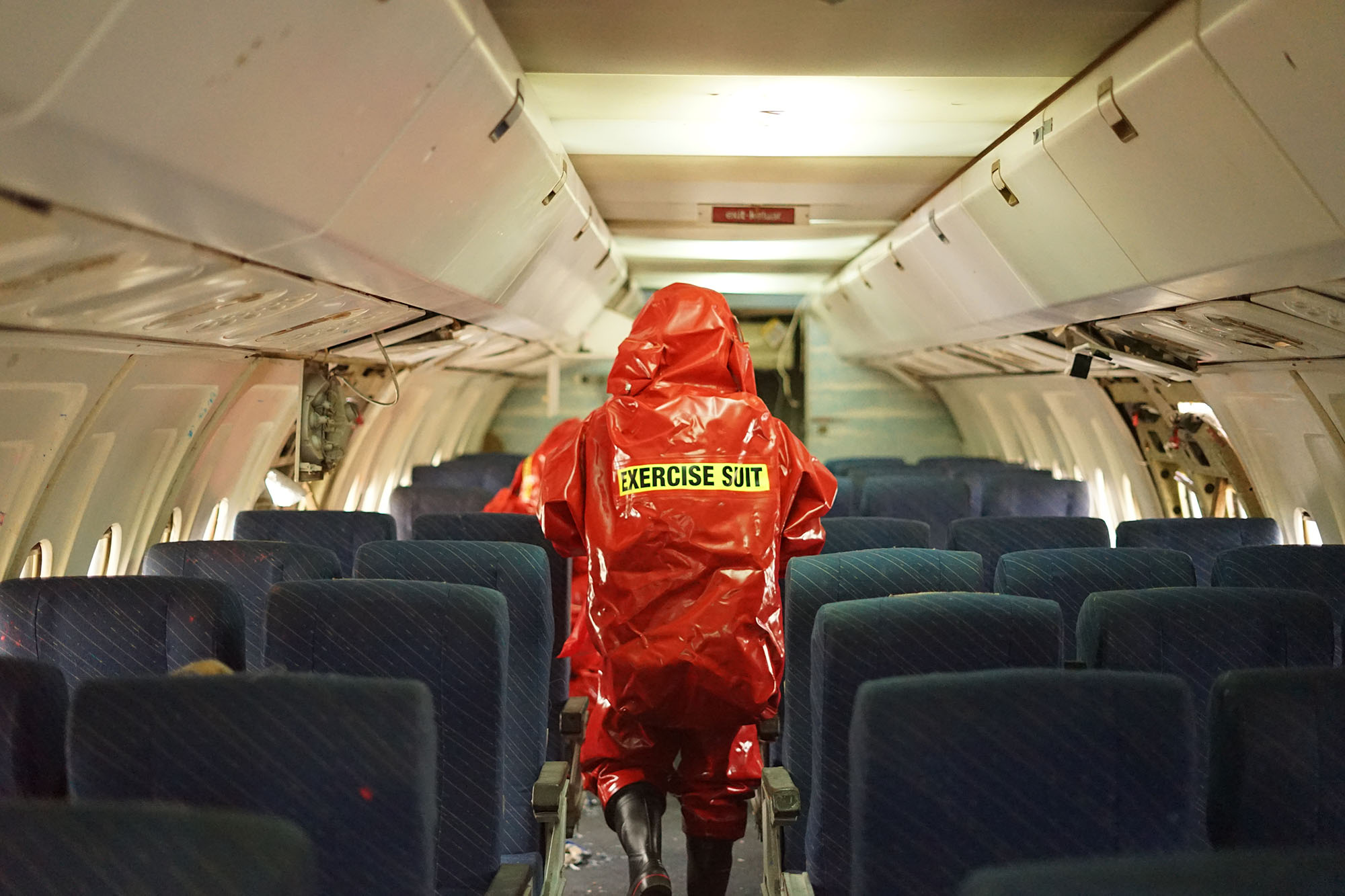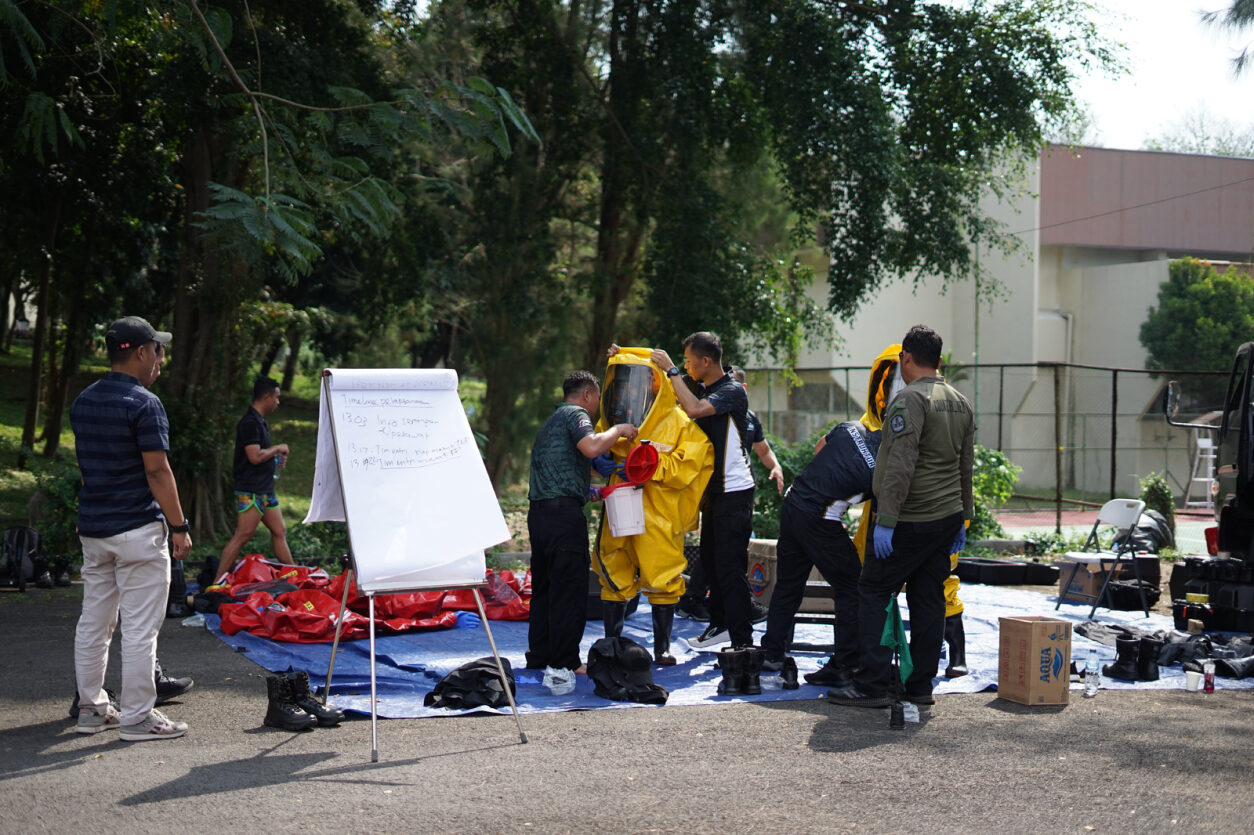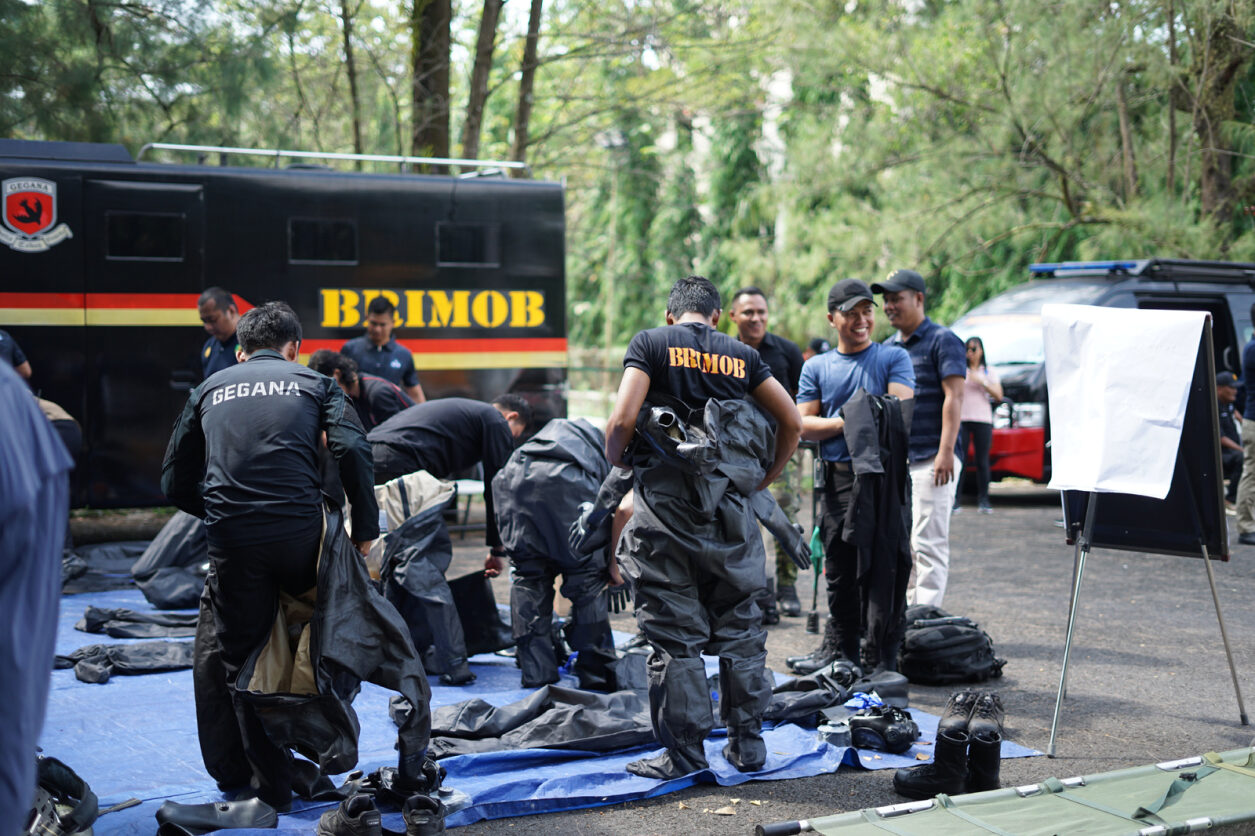
Semarang (Indonesia), 18 March 2024 – On a seemingly typical day in Semarang, a few train passengers have started to feel nauseous. Others nearby are saying they cannot breathe. Five have fainted. One is not responding. A few minutes in, a miniature car wheezes by them, followed by a group of people dressed in full astronaut-like orange suits. They’re looking for bombs.
This is what a fictional chemical terrorist attack simulation exercise looks like.
"The threat of chemical terrorism is real,” said Niki Esse de Lang, UNODC’s regional counter-terrorism coordinator for Southeast Asia and the Pacific. “To counter it, we need a solid, integrated response by all relevant actors.”
Indonesia is testing its capacity to respond to such threats through simulations like this one, which bring together representatives from government agencies and the private sector. So far, two have taken place in Semarang over the past months, jointly organized by the United Nations Office on Drugs and Crime (UNODC) and the National Counter Terrorism Agency (BNPT) of Indonesia, with the support of Indonesia’s National Police – Mobile Brigade (Brimob-Polri).

A very real threat
Since 2011, at least eight chemical terrorism incidents have taken place in Indonesia. Terrorist groups operating internationally, meanwhile, including Al-Qaeda and Da’esh (also known as ISIL) - have used chemical weapons in Iraq and in Syria. In 1995, the toxic chemical compound sarin was used in the Tokyo subway in Japan by members of the Aum Shinrikyo movement, killing 15 people immediately and injuring over a thousand more.
The same chemicals used in legitimate industries, such as mining, agriculture or pharmaceuticals, can also be used by terrorists. Chlorine, for example, commonly used in water treatment facilities, can also produce a chemical weapon. This complex threat requires strong cooperation between governments and the private sector on the national, regional and international level.
Preparing against the threat
Outside the train, more people in protective equipment have arrived. The scene is busy: some are establishing a control area, others are setting up decontamination stations, and others are providing medical aid.
A few are opening tactical laptops and equipment to measure the air and potentially contaminated surfaces, while others are drawing perimeters on the floor — red, yellow and green, depending on the contamination levels detected.
A miniature car with a sensor and a camera is circulating everywhere, taking samples and helping experts outside the perimeter determine toxicity levels. Nearby, a team dressed in yellow suits is being sprayed by colleagues before breaking out carefully from the thick suits.
These responders belong to different units and agencies: the police, the military, counter-terrorism, bomb disposal, forensics, medical, fire department and public infrastructure security.

“This training is necessary because of the threat of this type of terrorism,” said Edi Suranta Sinulingga, Commander of the Chemical, Biological, Radiological and Nuclear Unit within the Gegana Mobile Brigade of the Indonesia National Police. “Increasingly, there have been cases in Indonesia. So all stakeholders — not only the security forces — must prepare themselves to anticipate such acts of terrorism.”
Each ministry, institution or agency has different procedures or ways to respond. During the workshops, experts learned about and shared each of these mandates, frameworks, concepts of operation and standard operating procedures, as well as technical and operational capacities they can draw from.
“A highly coordinated response to such a complex attack needs strong inter-agency collaboration,” said Niels den Hollander, terrorism prevention expert at UNODC. “One entity alone cannot do this.”
An earlier simulation in summer last year took place on a plane. This one involved more complex elements, such as fictional perpetrators in gas masks carrying guns, suspicious hazardous material, hostages in an airport and explosions that produced real smoke on the exercise grounds.
“As medical personnel, this training is of immense value. We need to adhere to strict safety protocols before we enter contaminated zones to help the victims. If we don’t, we can then become victims ourselves. And what happens then, when no medical help is available?” a medical respondents from Kariadi Hospital in Semarang said.
More specialized sessions are planned to take place in 2024. These will focus on crime scene management for first responders to ensure that they know how to record and collect evidence from the scene correctly so that it can be admitted in criminal proceedings.
“By bringing these agencies together for exercises, we facilitate a process by which experts feel comfortable making mistakes, learning from them, identifying gaps and developing programmes to remediate them,” said Dimas Andianto, Programme officer at UNODC. “After all, it’s a lot easier to deal with and learn from a mistake in an exercise than it is in real life.”
Learn more about UNODC’s work in Southeast Asia and the Pacific here.